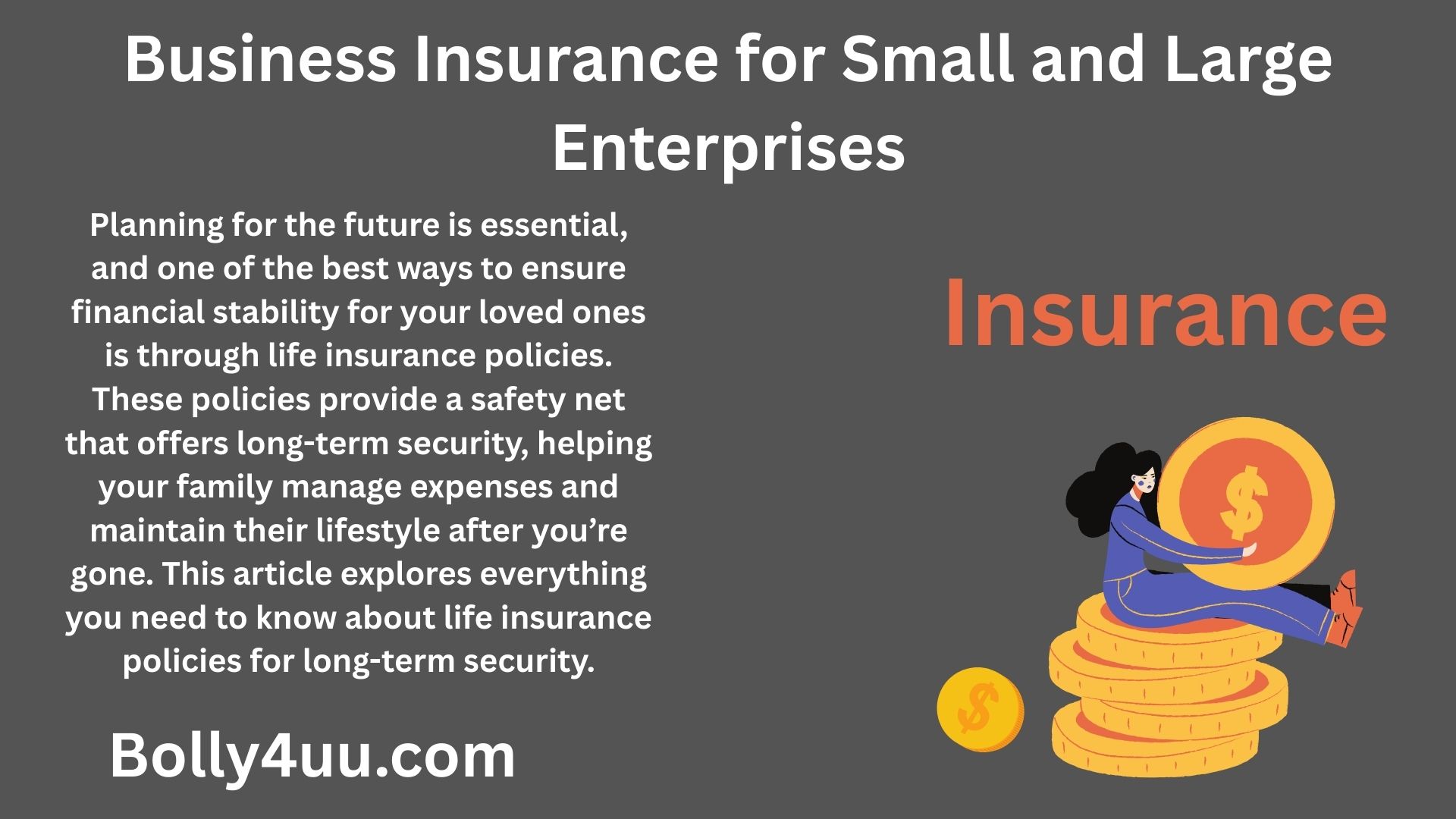Planning for the future is essential, and one of the best ways to ensure financial stability for your loved ones is through life insurance policies. These policies provide a safety net that offers long-term security, helping your family manage expenses and maintain their lifestyle after you’re gone. This article explores everything you need to know about life insurance policies for long-term security.
1. What Is Life Insurance?
Life insurance is a contract between you and an insurer that pays a designated beneficiary a sum of money upon your death. It helps cover financial obligations such as debts, mortgage payments, and daily living expenses, providing peace of mind that your family will be supported.
2. Types of Life Insurance Policies
There are several types of life insurance policies to suit different needs:
- Term Life Insurance: Provides coverage for a specific period (e.g., 10, 20, or 30 years). It’s affordable and straightforward but doesn’t build cash value.
- Whole Life Insurance: Offers lifetime coverage with a savings component that accumulates cash value over time.
- Universal Life Insurance: Flexible premiums and coverage amounts with a cash value element that can grow based on interest rates.
- Variable Life Insurance: Allows investment of the cash value in various options, with potential for higher returns but also greater risk.
3. Why Choose Life Insurance for Long-Term Security?
Life insurance secures your family’s financial future by:
- Covering final expenses and debts
- Replacing lost income
- Funding children’s education
- Providing estate planning benefits
- Supporting long-term financial goals
4. How Much Life Insurance Do You Need?
Calculating the right coverage amount depends on factors like:
- Your income and number of dependents
- Outstanding debts and mortgages
- Future expenses such as college tuition
- Existing savings and investments
A common guideline is to have coverage worth 7–10 times your annual income.
5. Benefits of Term Life Insurance
Term life insurance is ideal for those seeking affordable protection for a defined period. It’s often chosen to cover:
- Mortgage duration
- Child-rearing years
- Income replacement during working years
6. Advantages of Whole Life Insurance
Whole life insurance offers lifelong protection and builds cash value, which you can borrow against or use to pay premiums. It’s suitable for individuals seeking both insurance and a long-term savings component.
7. Universal and Variable Life Insurance Explained
Universal life provides flexible premium payments and death benefits, adapting to your changing needs. Variable life insurance offers investment opportunities but carries higher risk due to market fluctuations.
8. How to Choose the Right Life Insurance Policy
Consider these steps:
- Assess your financial goals and needs
- Compare policy features and costs
- Evaluate insurer reputation and customer service
- Consult with a licensed insurance advisor
9. Life Insurance Riders to Enhance Coverage
Riders are add-ons that tailor your policy, such as:
- Accidental death benefit
- Waiver of premium (if you become disabled)
- Child term rider
- Chronic illness rider
They provide additional protection but may increase premiums.
10. Final Thoughts: Secure Your Family’s Future Today
Investing in life insurance is a responsible step toward long-term security. With the right policy, you can ensure your loved ones are financially protected no matter what happens.
✅ Key Takeaways:
- Understand different types of life insurance policies.
- Calculate adequate coverage based on your financial situation.
- Consider policy riders for enhanced protection.
- Review your policy regularly to keep up with life changes.
